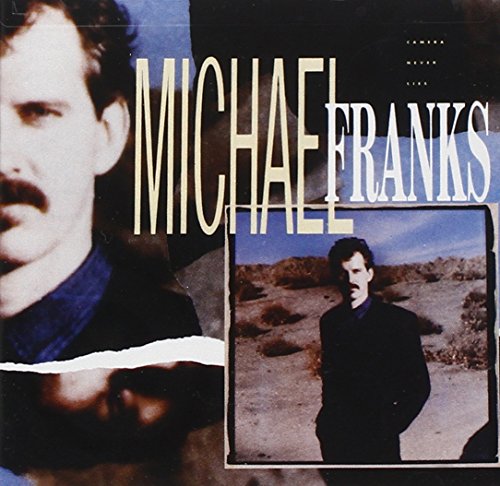
Frank Ocean
Endless
Release Date: Aug 19, 2016
Genre(s):
Record label: Def Jam
Music Critic Score
How the Music Critic Score works
Album Review: Endless by Frank Ocean
Fairly Good, Based on 11 Critics
Based on rating 9/10
First time I sang karaoke was this summer and I was nowhere near fucked up enough. I enjoyed it, though. One highlight involved pretty shaky accompaniment for a spirited rendition of ‘Close To You’, barely keeping up with a dance partner who nailed her part. I guess the point is that when it comes down to it, you find a way, no matter how ludicrous and neon-tinged and 2am your own specific situation may be.
Based on rating 4/5
And so, after all the delays and rumours and teasers and the DIY-themed live streams, Frank Ocean’s new album is finally here! What, I hear you ask, is Boys Don’t Cry actually like? Erm, we don’t really know. Because Frank Ocean being Frank Ocean, the album he has put out isn’t Boys Don’t Cry. At least we don’t think it is. Instead it’s billed as a “visual album” called Endless.
Based on rating 7.5/10
At first, Frank Ocean was simply a great storyteller. Then he became the story—an avatar for all of our fluid modern ideals. He could be the dynamic human of the future, exploding age-old binaries with an eloquent note, melting racial divisions with a devastating turn of phrase or quick flit to falsetto. He breathed hope.
Based on rating B-
Frank Ocean never owed us anything. To hold a timestamp, due date, or quality check to his name is to assume he entered the music-making business to please, a notion so outlandish that every detail of his life — which, really, means a lack thereof — points to the opposite, to Ocean’s career being something he extracts enjoyment from and takes pride in, but never aspired to wring fame from. Ocean certainly didn’t sign up for that when he joined (and slowly slinked away from) Odd Future, when he rolled out standalone single “Novacane”, when he dropped Channel ORANGE and barely did promotional tours.
Based on rating 3/5
The shift from finite music formats to digital appeared to open a new world of possibilities for the album, but for the most part its parameters haven't changed that much. An album is still a series of songs that form single body of work and only rarely do musicians flaunt commercially acceptable run-times. Where digital has given artists the greatest leeway is in the album roll-out.
Based on rating 5/10
During the four years that passed between album-length recordings from Frank Ocean, the Grammy-winning singer and songwriter surfaced on releases by Beyoncé, Kanye West, and James Blake. Through the processing of reports and speculation throughout the time, and knowing Ocean's unease with the pop machine, the follow-up to Channel Orange appeared to be imminent, or maybe mythical, or somewhere within the two poles. On the first day of August 2016, The New York Times published "Frank Ocean's Long-Awaited 'Boys Don't Cry' Is Due on Friday," yet the article's opening sentence was less certain, stating that the wait "may nearly be over." Nothing was clear.
Based on rating 4/10
There finally comes a moment in Frank Ocean's Endless, at about the 18-minute mark, when the entire affair finally isn't completely dull. At long last the characters in the California musician's visual album begin painting the boxes that we just spent a dozen minutes watching them saw and piece together the boards for. Shot in stark black and white, and with a presumably digital effect that renders the three shop workers mostly blank black and unrecognizable, the visual album's first third consists of footage of that aforementioned plodding construction while mostly subdued, sometimes ambient music serves as the soundtrack.
Opinion: Fantastic
The question, born both from anticipation and impatience, was always what has Frank Ocean been doing in the four years since his debut, “Channel Orange,” reframed the look and scope of modern R&B. He deliberately evaded the public eye. There was no way to know what he was doing with the time. All there was to go on was vague hints — an update that he’d started working on new music a year after “Channel Orange,” a tease for an ambitious follow-up to that album expected in July 2015 called “Boys Don’t Cry” that had “two versions, twooo versions” along with a companion magazine, then when July came and went, a coy post of a library slip stamped with dates that had passed without a trace of the album.
Opinion: Excellent
I first struggled to make sense of an album like this. But gut instinct tells me to approach it the way Frank Ocean intended: as a visual work. As such, Endless fails miserably. Its images—filled with tight cuts, harsh color palettes and harsher lighting—are unremarkable and sterile, exactly what the music isn’t.
Opinion: Excellent
Let’s talk about the conflicting notion of “being present”. We live in an age where everyone talks about the benefits of being mindful and craves the pleasure of enjoying the now. The trouble is that we’re also in an age of immediacy, where it feels like anything we desire can be achieved or discovered by tapping away briefly at a keyboard or a screen.
Opinion: Satisfactory
For all of the immersive experiences surrounding a new Frank Ocean record—make that two new Frank Ocean records—the end product is surprisingly singular. In his visual album, Endless, stark black and white footage shows three different versions of him simultaneously constructing something in a warehouse. None of the Franks are in any kind of hurry; their faces remain stoic, their working pace measured (they frequently check their phones) until they’ve sawed, spray-painted, and assembled a spiral staircase in the middle of the room.

